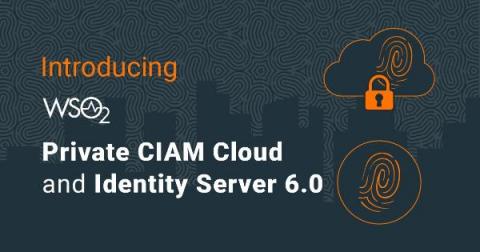Systems | Development | Analytics | API | Testing
Latest Posts
Fast Innovation for New Integrations, Microservices, and APIs
The rapid growth in the development and use of APIs shows no sign of slowing down, and the central role APIs play in digital business across industries continues to surge right along with that growth. One recent survey of IT leaders found that 98% consider APIs mission critical, with 81% currently working with microservices and 18% planning to do so soon. The exponential growth in APIs has been such that most software in use today either uses an API or is one.
Everything you Need to Know About WSO2 API Controller 4.1.0
WSO2 API Controller 4.1.0 was released with WSO2 API Manager 4.1, which supports performing CI/CD tasks for APIs/API Products and Applications alongside WSO2 API Manager.
Introducing WSO2 Private CIAM Cloud and Identity Server 6.0
WSO2 Identity Server is an API-driven open source IAM product designed to help you build effective CIAM solutions. It is based on open standards such as SAML, OAuth, and OIDC with the deployment options of on-premise, cloud, and hybrid. It supports complex IAM requirements given its high extensibility. WSO2 Identity Server manages more than 1 billion identities worldwide.
Empowering DevOps to Migrate API Products
DevOps personnel can migrate API Products using WSO2 API Controller, adding more value to the CI/CD process in collaboration with WSO2 API Manager. This blog highlights the use cases of migrating API Products and also specifies different flag usages using WSO2 API Controller 4.1.0. Let’s begin.
Building a Pricing Strategy for Your APIs
An API is a unique product. There is no presentable UI or outcome a developer can show and market similar to a regular product in the marketplace. The only way to perceive its usefulness is to spend time testing and understanding the value it brings. Given these unique conditions, monetizing an exposed API requires a different approach compared to monetizing other products. This post discusses how to build a pricing strategy for your APIs and which aspects you should consider.
Authentication Through The Ages Until FIDO
FIDO is a term that’s commonly heard of in the passwordless-authentication space. In this blog post, we’ll discuss how passwordless-authentication mechanisms first emerged, and also learn how FIDO authentication works.
In Brief: The Circuit Breaker Pattern
Say you’re running a web service that requires input. In turn, the web service delivers it to another backend service. If the backend service isn’t available for an extended time, do you have a fail-proof system in place? This is where the circuit breaker design pattern comes in.
How PI and PII Is Managed Between Multiple Geographical Regions
Most people in the industrialized world are connected to the internet in one way or another. They may not access the internet directly, but their PI and PII are captured through various interactions with other people and government/private entities.
How to Innovate Fast with API-First and API-Led Integration
How can you innovate quickly with APIs? Most companies are already implementing them, and some have success stories to share.











